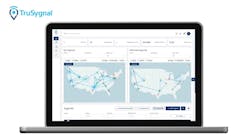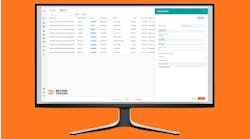Daimler has officially unveiled a new line of trucks for the growing commercial vehicle market in India, where the OEM hopes to cut into the large market share that Tata Motors holds in that country. The BharatBenz brand will offer a range of trucks from 6 to 49 tons, Daimler said.
“We are sending a clear message with our new truck brand: Daimler is at home in India,” said Dr. Dieter Zetsche, chairman of the board of Daimler AG. “Our BharatBenz trucks are the right combination of Daimler’s DNA and India’s market know-how. These trucks will be developed and built in India, for India, and by specialist employees from India.”
Tata currently holds 65% of the market in India according to Automotive Horizon, although Andreas Renschler, head of Daimler Trucks and Daimler Buses, said the company expects the market to explode by as much as 80% by 2020.
“India’s macroeconomy has been on a growth track over the last years and is estimated to grow between seven and eight percent in the next ten years,” Renschler said. “Additionally, India has become the world’s second largest market for medium- and heavy-duty trucks. By 2020, we expect the Indian truck industry to double. We will play a significant role in this leap.
“For us,” he continued, “the most promising market is the new middle market, for which we will offer our new truck product portfolio. That’s why we’ll see a general upward trend towards vehicles that will set new standards in terms of performance, quality reliability and efficiency.”
The Germany-based OEM said the truck range, which will be built at the company’s manufacturing facility in Oragadam, near Chennai, will be sold under its Daimler India Commercial Vehicles (DICV) subsidiary. The first trucks should hit the roads in 2012, Daimler said.
The Oragadam facility includes a state-of-the-art test track. DICV has invested approximately $700 million in this venture, it said.
“The BharatBenz product range will draw on Daimler Trucks’ entire range of technological expertise in order to best address the special needs of Indian customers,” said Marc Llistosella, managing director & CEO of DICV. “The product range in the light-duty segment is based on the Fuso Canter tried-and-tested platform, while the heavy-duty range is based on one of our Mercedes-Benz truck platforms. With these platforms the trucks have been ideally tailored to the needs of our India customers.”


